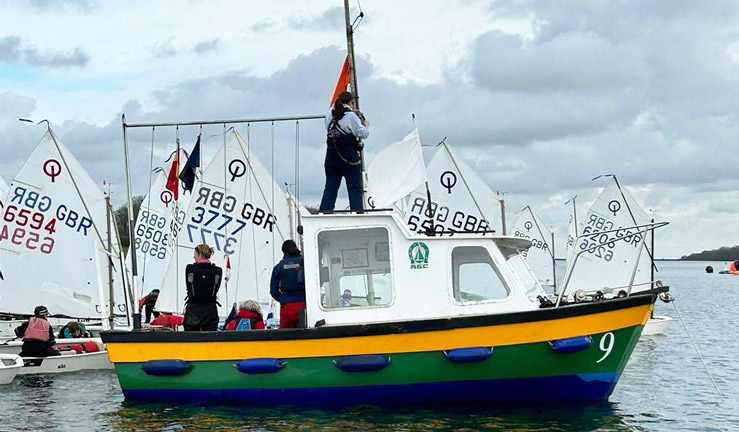RYA's first female National Mark Layer

Imogen started on her sailing journey at an early age, saying: "I started sailing with my parents when I was very little, I've raced, cruised, and even enjoyed what I call ‘picnic sailing’.”
Imogen expanded her experience and undertook multiple roles within her sailing club. This included instructing, race coaching, and club race officer duties, all culminating in her participation in the RYA Race Officials Academy. An opportunity she discovered through reading an article in the RYA Magazine.
"I applied for the programme and I found that I really enjoyed race management, both as a Race Officer and as a Mark Layer" she adds: “The more I learnt and the more experienced I had the more I enjoyed, it even when it's windy and cold and wet!”
The art of mark laying
Mark Layers are an important aid to the Race Officer. They are responsible not only for laying marks to set the course but also to give information to the Race Officer on wind strength and direction across the course area.
Imogen has now successfully completed both the Regional and National Mark Layer courses and emphasises the value of learning from instructors and peers. "Having time on the water to practice different techniques was useful" she notes.
Top tips for aspiring mark layers
First and foremost, wearing the right kit is very important and advises: “You will get wet, your hands will go in the sea, so make sure you a dressed for that”. She laughs and recalls after one time “after an unpleasant encounter with a jellyfish, I always wear gloves!”
She stresses the importance of being ready for a full day on the water: "Learning how to use a jersey ring is pretty critical, particularly if you want to work in deeper water" she advises: "If you've not worked in tidal waters before, ask the locals for advice".
To handle the physical demands and prevent injuries, Imogen suggests yoga for strength and flexibility that helps build the strength and employ smart lifting techniques, using the power of the engine when needed to help: “it's not about brute force, it's more about technique".
Finally, take the time to talk to the race officer and establish how you are going to work as a team to get the best racing in that you can, and if something needs to change then have a quick chat at the end of the day.

Navigating changing conditions
Sailing events are known for their unpredictability. Imogen has a systematic approach to ensure accurate mark placement: "Having a plan within your boat really helps with this" she states. Thorough preparation, matching lines and tackle for gate marks, and carrying essential equipment contribute to a seamless operation. Imogen relies on a tide stick to aid mark positioning and emphasises the importance of observing wind changes and communicating them to the race officer.
Imogen encourages: “If you've not done any mark laying before, get involved! It's a fun role on the water, you are always busy and with a front row seat to the racing. It's very satisfying to know that you've laid a gate exactly the right size and angle, or put the pin in exactly right, which then led to great racing!”
Discover more about the roles of Race Officials
Has Imogen's story inspired you? Find out more about how you can make a real impact in the world of race officiating and start your journey here.
